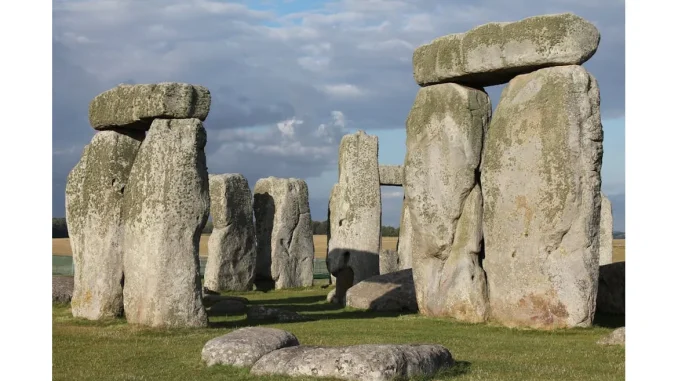
In a significant development that has ignited widespread concern and debate, UNESCO has recommended that Stonehenge, the iconic prehistoric monument in England, be added to its World Heritage List of sites in danger. This recommendation emerges amidst a contentious proposal by the British government to construct a road tunnel near the ancient site, a project that has attracted substantial opposition from various stakeholders.
Read more about sustainable development.
The World Heritage Committee, responsible for the protection of globally significant cultural sites, is scheduled to vote on this recommendation in July during their assembly in New Delhi. The decision to potentially place Stonehenge on the endangered list is intended to rally international support in safeguarding a site that has stood as a testament to human ingenuity for millennia.
A Monument of Unparalleled Historical and Cultural Significance
Stonehenge, designated as a UNESCO World Heritage Site since 1986, was constructed between 3,000 and 2,300 B.C.E. Revered for its sophisticated design and architectural precision, the site has captivated historians, archaeologists, and tourists alike. The monument, with its towering stones arranged in a circular layout, is believed to have served as a ceremonial site, possibly aligning with astronomical events.
However, the tranquil and historic ambiance of Stonehenge now faces a threat due to modern infrastructural demands. The British government approved a £1.7 billion ($2.2 billion) road tunnel project last July, aimed at alleviating traffic congestion on the frequently busy A303 road. While this project promises to enhance traffic flow, it has raised alarms regarding the potential “permanent, irreversible harm” it could inflict on the surrounding landscape.
The Controversial Road Tunnel Project
The proposed tunnel has been a flashpoint of contention since its approval. Campaigners, environmentalists, and local Druids have expressed vehement opposition, contending that the project could irrevocably damage the site’s integrity and its ecological surroundings. Arthur Pendragon, a prominent Druid leader, has been particularly vocal, stating, “Stonehenge is not merely an archaeological marvel; it is a living spiritual site. This tunnel would desecrate our sacred ground.”
The area around Stonehenge is not only of historical importance but also a vital ecological zone. It harbours unique flora and fauna, some of which are already threatened by human activities. Kate Fielden of the Stonehenge Alliance underscored the broader implications, asserting, “We are discussing an irreplaceable part of our heritage and natural environment. This is not merely about stones; it encompasses the whole ecosystem.”
The Role of UNESCO and International Implications
UNESCO’s recommendation to add Stonehenge to the list of endangered sites is a strategic step that could draw international attention to the issue. The World Heritage Committee’s written decision, as seen by AFP, highlights the urgency to galvanise global support for the site’s preservation. One diplomat noted that the recommendation would likely receive approval at the committee’s New Delhi meeting in July.
Inclusion on UNESCO’s list of endangered sites is often perceived as a mark of shame for the countries involved. For the UK, such a designation could have profound consequences. It would not only pressure the government to reconsider its infrastructural plans but also serve as a global call to action, urging other nations to protect their heritage sites from similar threats.
The potential listing of Stonehenge could draw parallels to other heritage sites facing endangerment, such as Liverpool, which lost its World Heritage status in 2021 due to overdevelopment. This precedent raises concerns that Stonehenge could suffer a similar fate if the road project proceeds as planned.
Balancing Development and Preservation
The controversy surrounding the Stonehenge road tunnel project underscores a broader tension between development and preservation. While the necessity for improved infrastructure is undeniable, the challenge lies in balancing this with the imperative to protect cultural and historical sites. Stonehenge is not just a British treasure; it is a part of global heritage. The involvement of the international community, as suggested by UNESCO, highlights the universal value of such sites.
This dilemma is not unique to the UK. Globally, heritage sites are under threat from various forms of development and environmental degradation. From the Great Wall of China facing erosion and vandalism to the Amazon rainforest’s ongoing deforestation, the struggle to preserve heritage amidst the demands of modernisation is a pervasive issue.
The potential listing of Stonehenge as an endangered site could set a significant precedent, prompting other countries to take more decisive actions to protect their heritage sites. It serves as a reminder of the collective responsibility to safeguard our shared cultural and natural heritage.
Looking Ahead
As the World Heritage Committee prepares to convene in New Delhi, the fate of Stonehenge hangs in the balance. Should the site be added to the list of endangered sites, it could trigger a series of actions aimed at halting the road tunnel project. The British government might face increased pressure from both domestic and international communities to explore alternative solutions to the traffic congestion problem.
Furthermore, such a decision could lead to a broader reassessment of how heritage sites are managed and protected in the UK. It might catalyse legislative changes aimed at providing stricter protections for historical sites, ensuring that infrastructural development does not come at the expense of cultural heritage.
In the long term, the Stonehenge controversy could inspire a global movement towards more sustainable and respectful development practices. It serves as a stark reminder that our shared heritage is fragile and that safeguarding it requires collective responsibility and action. The world will be closely watching as the decision unfolds, hoping that the legacy of Stonehenge will be preserved for future generations to marvel at and learn from.


Be the first to comment